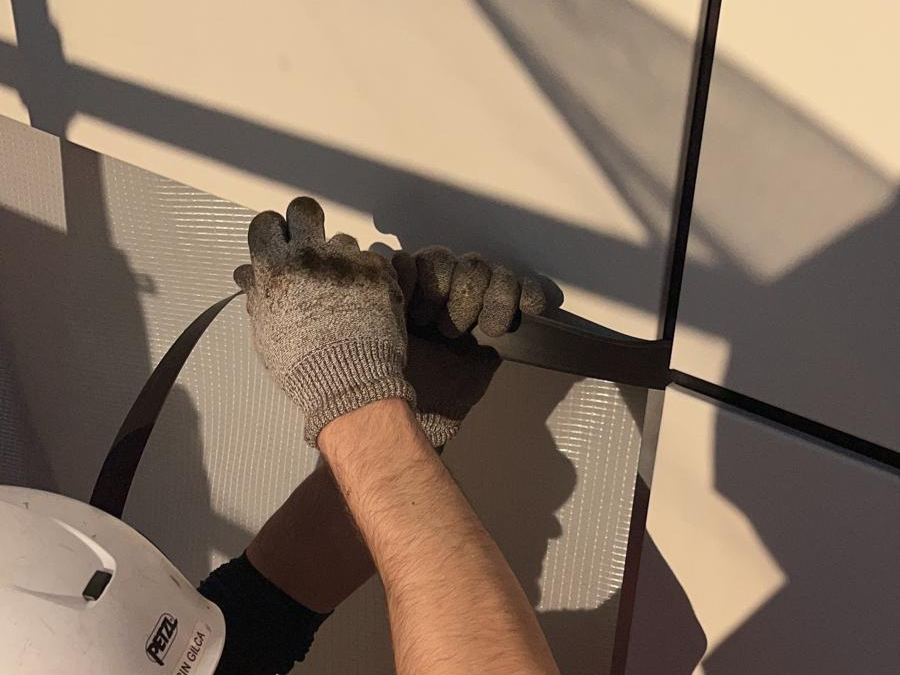
For quantity surveyors evaluating building materials during the preliminary or beginning stage of a project, understanding the advanced functions of rainscreen cladding is essential. Among the most effective and widely adopted systems is the drained and ventilated rainscreen cladding system. This design not only enhances a façade’s defence against environmental challenges but also supports long-term durability, thermal efficiency, and compliance with modern construction standards.
This article explores what drained and ventilated rainscreen cladding is, how it works, and the benefits it offers while guiding you through its application in modern building designs.
What Is A Rainscreen Cladding System?
Rainscreen cladding systems are designed to be external layers of protection for buildings, acting as a shield against wind-driven rain and other environmental factors. Typically mounted onto a sub-frame that is securely fixed to the building’s main structure, these systems use a combination of performance with design flexibility, offering both functional resilience and architectural versatility.
What Types Of Materials Are Used In Rainscreen Cladding?
To cater to diverse architectural designs and operational requirements, rainscreen cladding systems utilise a range of materials. Common materials include:
- Aluminium: lightweight, corrosion-resistant, highly versatile.
- Terracotta: durable with strong weathering performance.
- Zinc and Copper: long-lasting, self-weathering metals.
- Stainless Steel: robust and low-maintenance.
- Glass: sleek, modern appearance, often used in high-end façades.
- Timber: natural aesthetic, though it requires treatment and maintenance.
It’s often aesthetics that govern the choice. However, in some instances, the choice is influenced by factors like longevity, durability, and weatherproofing. For example, aluminium is resistant to corrosion, while being versatile enough to create almost any design.
Why Does Drainage And Ventilation Matter?
A drained and ventilated rainscreen cladding system provides an additional level of façade protection. The ventilated cavity behind the external cladding serves multiple functions:
- Drainage: Any water that penetrates the outer cladding is channelled safely down and out of the cavity, protecting the insulation and structure from moisture damage.
- Ventilation: Continuous air circulation prevents moisture build-up, promotes drying, and reduces the risk of condensation-related issues such as mould.
- Thermal stability: By preventing humidity from compromising insulation, the system helps maintain consistent thermal performance over time.
- Durability: Preventing water ingress reduces material degradation, extends the façade’s lifespan, and lowers long-term maintenance requirements.
- Resilience: Acting as a barrier against extreme weather, the system mitigates the effects of rainfall, moisture accumulation, and wind-driven pressure, ensuring the façade remains robust under demanding conditions.
How Does A Drained And Ventilated System Work?
Advanced engineering underpins every drained and ventilated system. It combines a weather-resistant outer skin separated from the insulated wall by a cavity to control airflow. This cavity acts as a pressure equalisation chamber, allowing air to circulate freely and reducing water penetration. The equalised pressure prevents wind-driven rain from being forced through the outer layer. If small amounts of moisture do pass the rainscreen, the cavity ensures it is drained away efficiently, keeping the internal wall dry. The combination of ventilation, drainage, and pressure equalisation is what gives rainscreen cladding its resilience and reliability.
Benefits For Modern Constructions
The advantages of drained and ventilated rainscreens are clear. By effectively managing moisture, these systems prevent water from penetrating into the structure, protecting both the insulation and the primary wall. The ventilated cavity also provides pressure equalisation, resisting wind-driven rain and ensuring the façade remains resilient even in extreme weather. Crucially, the insulation layer is kept dry and stable, which helps maintain thermal performance over time. This design reduces the risk of material degradation, extending the lifespan of the façade and lowering lifecycle maintenance costs. In addition, drained and ventilated rainscreens align with best practice in building envelope design, providing assurance of compliance and reducing long-term risk for contractors, clients, and project stakeholders alike.
Next Steps
At Advanced Glass, we’re committed to delivering cutting-edge rainscreen cladding systems tailored to your unique requirements. Contact us today to discuss your project needs and ensure a façade that stands the test of time.


